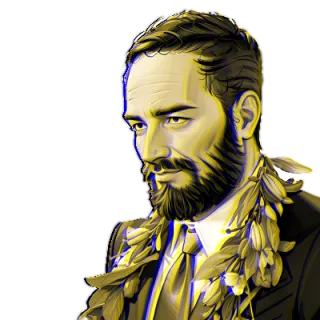Main Character Syndrome in Media
Let's talk about Main Character Syndrome in AAA games like FFXIV: Dawntrail and discuss how modern storytelling balances plots of characters.

We should have a conversation about the state of storytelling in gaming. Following the recent Metacritic score release of Final Fantasy XIV: Dawntrail, I have noticed a general discourse surrounding what quality storytelling looks like in AAA gaming. I’ve read many questionable takes on the expansion’s story, but they mostly boil down to a single point of contention: We do not feel like the main character of this story.
There was a lot of criticism for one of the companions in particular, Wuk Lamat, whom we take up the role of mentor for while she serves as our guide and emotional connection to Tural during our adventures. Aside from the clearly transphobic opinions of some of Dawntrail’s reviews, there have been many reviews lamenting the amount of screen time and dialogue Wuk Lamat had in comparison to the Warrior of Light and the other Scions.
As a player who played through Dawntrail’s story, engaged with the side content, and took meticulous notes of relevant details for use in future content I plan to create with my community of storytellers and roleplayers, I feel that we are witnessing a variant of a real-life psychological phenomenon that has become especially prevalent since the COVID-19 pandemic:
“Main character syndrome describes the lens through which a person sees themselves. People who think they’re the main character tend to believe that they’re the most important person in most situations and interactions with people.” - Topsie VanderBosch, LMSW
While not an official medical diagnosis, main character syndrome is quickly gaining traction among psychologists as a phenomenon closely related to narcissism. Looking back at gaming over the last few years, I cannot help but feel that story-based AAA games may be contributing to this phenomenon a little bit, making us forget that it is okay not to be the center of every thread of the plot.
The biggest AAA story-based games released in 2022 and 2023 did not put much emphasis on side plots and reliance on side characters. Elden Ring, Final Fantasy XVI, Cyberpunk, and other games that center around your lone wolf main character were more numerous than games like Baldur’s Gate 3, where the attention to plot development was more evenly spread. In my opinion, this fact has served as a detriment to our expectations as consumers when it comes to devouring story content.
Of course, the influence of social media cannot be overstated. Platforms like Instagram, TikTok, and Twitter have given rise to a culture where individuals curate their lives as if they are the main characters in a never-ending narrative, which is only exacerbated when companies cater to and encourage this behavior. As people become accustomed to presenting and perceiving themselves as the focal point of their own stories, they naturally seek out similar experiences in the games they play. This shift in perception can lead to frustration when games like Dawntrail choose to emphasize the growth and importance of side characters over the main protagonist, challenging the player's self-centered viewpoint cultivated by social media.
Dawntrail has been such a polarizing expansion, and I am not quite certain why. Audience expectations have evolved significantly over the years, influenced by cultural trends and generational attitudes toward storytelling. While older generations might have been content with linear, hero-centric narratives, modern audiences often crave complexity and depth in their stories. This shift is evident in the success of ensemble-cast TV shows like Game of Thrones and Stranger Things, where the development of multiple characters is integral to the plot. Games like Dawntrail, which spread narrative focus across a diverse cast, reflect this trend. However, the challenge lies in balancing these expectations with the desire for a personal, immersive experience. When players express dissatisfaction with not always being the central figure in the story, it highlights the tension between traditional hero narratives and the modern preference for richer, more interconnected storytelling—further exacerbated by outside influences and companies catering to their consumers’ inherent desire to be a main character.
Personally, I like it when game developers spread the attention out a little bit between a game’s main character and side characters. If I were reading a book, I would like the story much more if I got to watch both the main character grow and the supporting cast grow too. What are your thoughts? Be sure to comment below your thoughts and opinions on the matter. Has main character syndrome started to infiltrate our games and other media entertainment as it has in social media? Let me know.
Penman Ventures Newsletter
Join the newsletter to receive the latest updates in your inbox.




